Leafy spurge was introduced to Minnesota in 1890 with a bushel of oats from Russia. By 1992, it was estimated that there were 800,000 infested acres in the central, northern, and western parts of the state, in addition to the Twin Cities area. In response, approximately nine million leafy spurge beetles (Aphthona lacertosa) were released at over 2,000 sites in Minnesota from 1994 to present as a biological control. Biological control with the beetles has been overwhelmingly cost-effective and successful at greatly reducing infestations at most sites. The use of beetles to control spurge continues to be a collaborative effort with public and private land managers, County Agricultural Inspectors and the Minnesota Department of Agriculture.
Since leafy spurge is native to Eurasia, it lacks the insects and diseases in North America that keep it in check in its native range. Biological control reunites the target plant with its natural insect and disease controls. The bioagents used for controlling leafy spurge were tested extensively to ensure that they will feed only on the target weeds. Adult leafy spurge beetles, Aphthona sp., feed on the leaves and lay their eggs at the base of spurge plants. The eggs hatch and larvae feed on the roots over the winter until they pupate and emerge as adults the following summer. Most damage to the spurge plants is caused by the larvae feeding on the plant roots. It can take several years before a leafy spurge infestation is visibly reduced. Biological control is a cost-effective, long-term, sustainable strategy to control leafy spurge.
Starting and maintaining a leafy spurge biological control program
1. Assess the site.
How much leafy spurge do you have? Is it one large continuous patch or several smaller, isolated patches? An infestation should be approximately a half acre or larger. If you have only a few plants, you should consider hand pulling (use gloves) or spraying the plants with a herbicide and follow up over the next three to four years.
Disturbed sites such as active gravel pits and mowed roadsides are not appropriate for biocontrol. Do not select sites that will be mowed.
2. Obtain leafy spurge beetles.
Call your County Agricultural Inspector (CAI) or the MDA and explain that you have leafy spurge on your land and are interested in using biocontrol. The CAIs have a well established network that coordinates with multiple agencies, including the MDA, to ensure that leafy spurge beetles are distributed where needed.
There is no charge or cost to the landowner for the leafy spurge beetles.
3. Release the leafy spurge beetles. Releasing them is simple.
Take a photo of the site so you have an image to compare with several years following the leafy spurge beetle release.
Make a note of the release location or mark the spot with a stake.
Open the container of insects and gently pour them onto the leafy spurge plants. The insects will disperse. Do not worry about touching the insects. They will not harm you.
4. It is important to monitor the site over the next few years to determine progress.
It is unlikely that you will see immediate changes.
The second summer after release, go back to the release site and look for leafy spurge beetles. They can be difficult to find without a sweep net so don't be discouraged if you don't see any.
Years after release, you may begin to see a decrease in the amount of leafy spurge although you are unlikely to see much foliar damage. Dead stems from the previous year may be visible. Again check for leafy spurge beetles. If at this point you don't find any leafy spurge beetles and see no decrease in the amount of leafy spurge, call your CAI or the MDA for advice. Augmenting the leafy spurge beetle population may be a good option in this case. Your site may be collectible in the future.
If you see leafy spurge beginning to decrease, call your CAI or the MDA to report the progress. It is possible that your site has a collectible population of biocontrol agents. Leafy spurge beetles can be collected and moved to a new location.
Do not worry about depleting the leafy spurge beetle population. Many will remain after the collection and will continue to eat away at the leafy spurge.
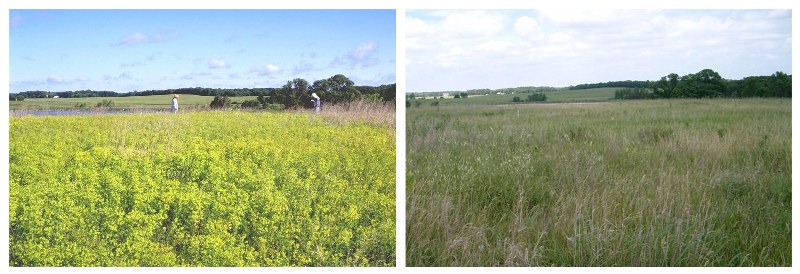
Leafy spurge beetles greatly reduced the leafy spurge infestation pictured on the left and the site returned to grass pasture.
Collecting and moving leafy spurge beetles
The predominant species of beetles released in Minnesota are Aphthona lacertosa and A. nigriscutis. The beetles are collected with sweep nets, sorted, quantified, and placed in containers with some leafy spurge. If the containers cannot be handed directly to the land manager, the containers can be express shipped to a land manager who releases the beetles. The goal is to release the beetles quickly after collecting them to ensure the beetles are healthy.
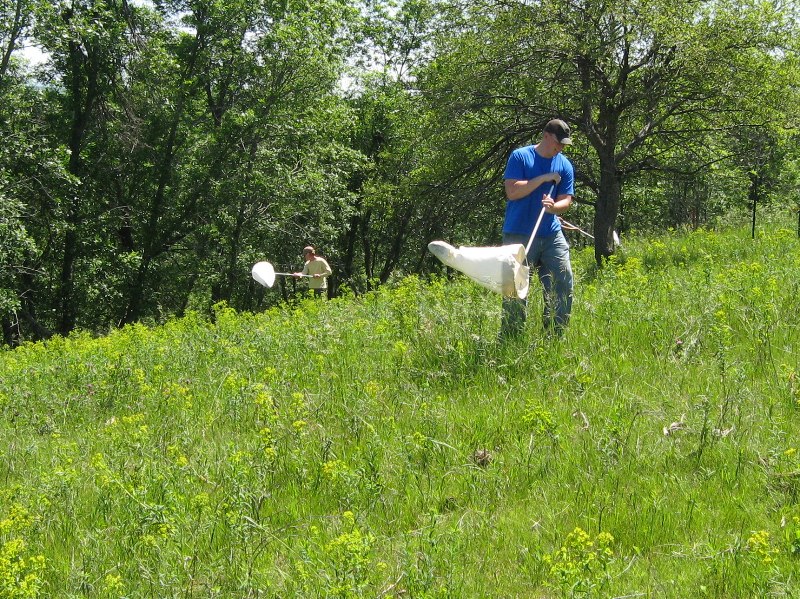 |
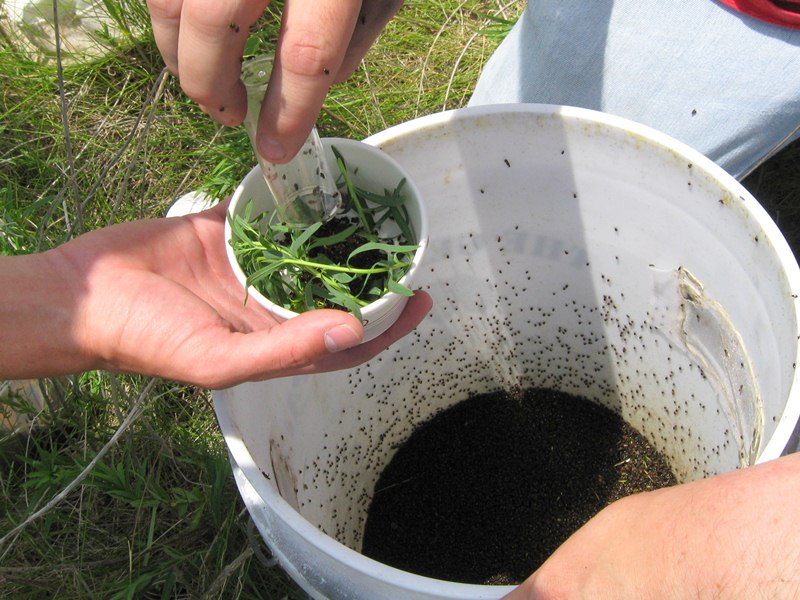 |
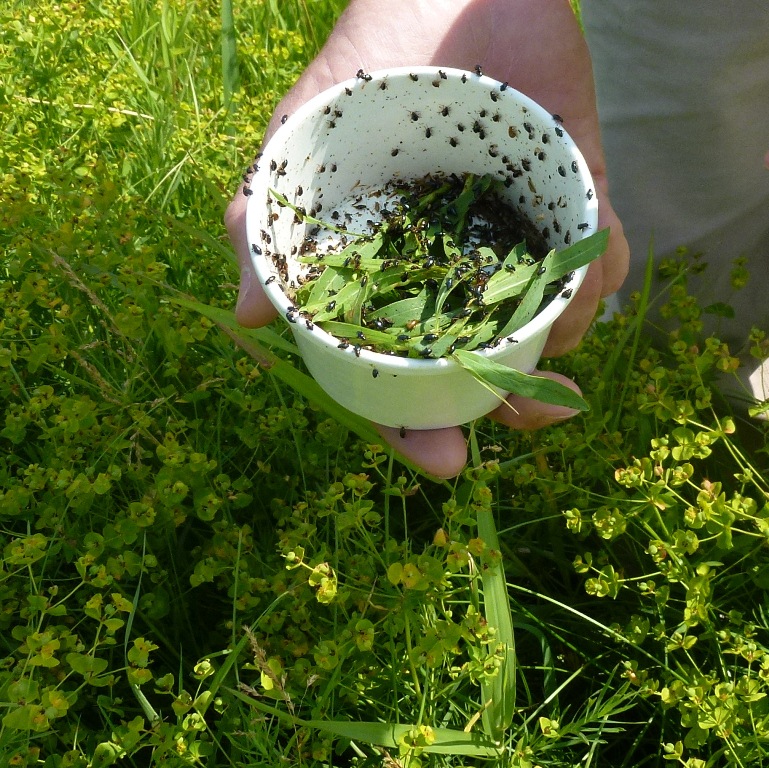 |
Other insect biocontrol agents
Some other bioagents were released in Minnesota and neighboring states. These bioagents are not usually distributed due to difficulties in collecting and sorting them. Also, the Aphthona beetles are generally very effective at controlling spurge without additional species. However, you may observe these species on your leafy spurge infestation since these bioagents can fly and do move to different infestations.
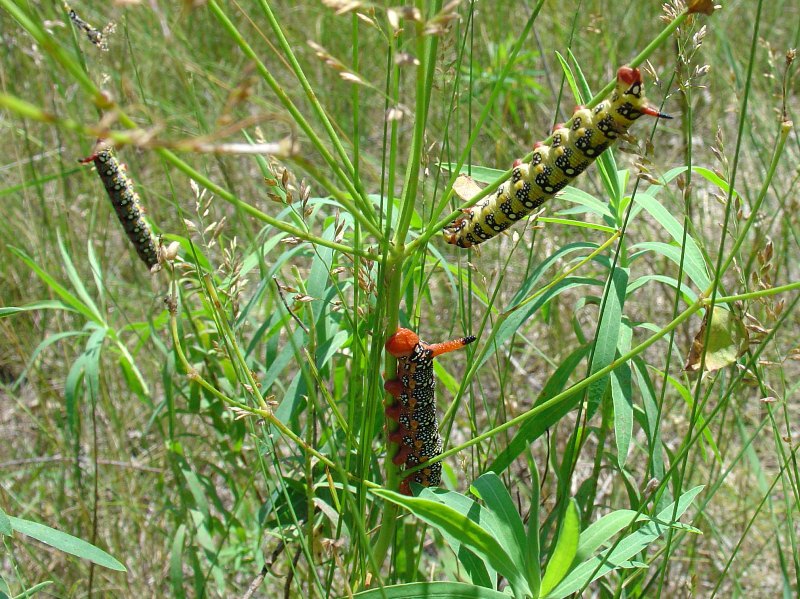 |
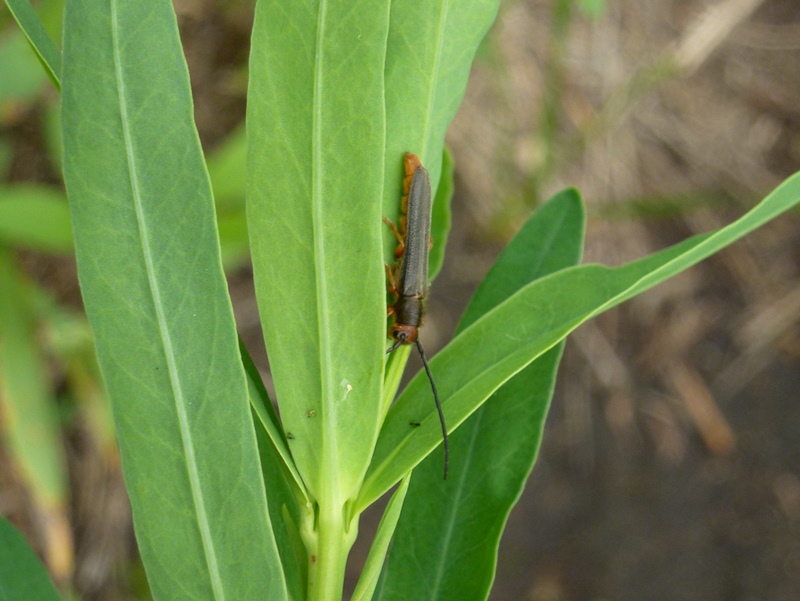 |
Goats and sheep
Goats and sheep can control leafy spurge in pastures when the right techniques are used.
Integrating control methods
- Hand-pulling and digging can be used to control small patches of leafy spurge. Use gloves when handling the plants.
- Herbicides can be used to control small patches or the perimeter of a large infestation to prevent the infestation from spreading while the leafy spurge beetles do their work. Contact your local extension agent for herbicide recommendations.
- Burning can be used to increase native plant competition in natural areas. Burning should not be done while the adult form of the beetle is present (May-August).

